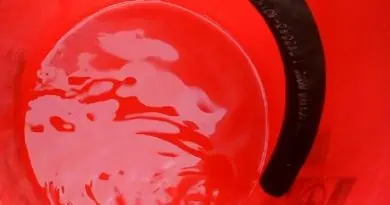Beginners Guide To African Cichlids
African cichlids are some of the most amazing freshwater fish going. They bring a uniqueness to the hobby that other freshwater fish simply do not possess and have been a passion of mine for many years now.
African cichlids are colorful and active freshwater fish. They make an excellent choice for an impressive display tank. However, you should keep in mind that they are aggressive fish and some species grow quite large.
“Is that a saltwater tank?” is a question I am frequently asked by visitors to my home. “I didn’t realize that freshwater fish could be this colorful” is another statement I often hear. This is usually followed up by “How difficult are they to keep?”, implying that they may be interested in having a similar setup at home themselves.
On this website, I will share with you the knowledge, tips and tricks I have learned over the years to help you be successful in keeping a colorful African cichlid tank.
Below is a YouTube video of my main display tank.
To start let’s have a look at some of the reasons to keep African cichlids, in particular Lake Malawi hap and peacock cichlids and answer some of the common questions people ask.
African cichlids have amazing colors.
As mentioned before African cichlids have amazingly vibrant colors rivalling that of marine fish. However, they don’t require an expensive setup or knowledge needed to keep saltwater fish.
Male hap and peacock cichlids normally show the most color and impressive fins. Whereas their female counterparts are usually a plain brown or silver color. Juvenile cichlids start off as plain looking fish, similar to females, and develop the colors as they mature.
Blue and yellow are the most common African cichlid colours but there are plenty of red and green fish to choose from when deciding on your stock list. Some research should be done to make sure there is plenty of color variety in your tank.
African cichlids are active fish.
There will always be plenty of activity in a rift lake cichlid tank. Fish swimming around, chasing each other and digging in the gravel. Not to mention the frenzy they go into when being fed.
I personally enjoy the high activity level of an African cichlid tank more that the laid back behavior of some other freshwater species.
They are hardy fish.
Malawi cichlids are quite tolerant of various water parameters (ph, gh, kh) but do best in clean hard water with a high ph, similar to the water parameters found in their natural environment.
Below are the parameters I would aim for in a mixed African tank.
Temperature: 24-29°C (75–84°F)
pH: 7.8–8.6
GH: 160-200 ppm
KH: 120-240 ppm
What to feed African cichlids?
Feeding these fish is fairly straightforward. Peacocks and haps are mostly carnivore or omnivore and mbuna are herbivore. There are plenty of brands of pellets available for the type of cichlid you are keeping. It is advisable to feed a variety of different foods and to avoid overfeeding your fish.
I have written a detailed article on feeding African cichlids for those of you looking for more information on this topic.
Are African cichlids aggressive?
The main reason I would not recommend these cichlids for beginners is they are aggressive fish. It can be very disheartening for someone new to the hobby watch as one by one the weakest fish is targeted and picked off by the others.
At times the aggression between fish can be quite intense and one of the fish may need to be removed from the tank. In addition, injuries picked up during fights can lead to fish suffering from bacterial infections.
To curb aggression, they require a reasonably large tank ranging from 55 gallons up depending on the type of fish you want to keep and the tank should be slightly overstocked.
It is recommended for a display tank to have only males to reduce the aggression caused due to competition for the females.
They are high bioload fish.
African rift lake cichlids eat a lot and produce a lot of waste. Frequent large water changes will be required to maintain good water quality. I find that filter cleaning and filter pad replacement needs to be done more regularly on an African cichlid tank than other types of tanks.
Commitment to a regular tank maintenance and water change schedule is key to keeping your fish and tank looking in optimum condition.
Conclusion.
While I have kept and enjoyed many different types of fish including discus, arowana and oscars, Lake Malawi haps and peacocks are hands down my favorite. I mentioned some of the reasons in this article but there are others such as the huge variety of species to choose from, ease of breeding and raising of fry which add to the enjoyment of the hobby.
If you have never kept African cichlids before they are definitely a fish worth trying. Make sure to do your homework first in regards to tank size for the fish you intend to keep.
I admit they aren’t for everyone, but then again they may become your new obsession for years to come.
Thanks for reading. If you found this article helpful, don’t forget to share 🙂



